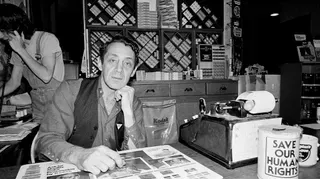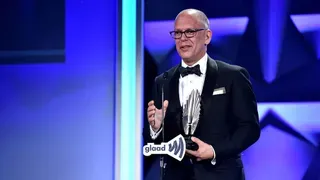October 4, 2013
Online Delays Signal Strong Demand for Health Care
Winnie McCroy READ TIME: 3 MIN.
Overloaded websites and jammed phone lines frustrated consumers for a second day as they tried to sign up for health insurance under the nation's historic health care overhaul.
That was putting pressure on the federal government and the states that are running their own insurance exchanges to fix the problems amid strong demand for the private insurance plans.
"I think I'm through with Hawaii Health Connector," said Richard Gamberg, 61, of Honolulu, after tweeting messages to officials and complaining to state lawmakers on Wednesday. "They've got ads in the newspaper, they've got ads on the TV -- it just flabbergasts me."
He was among the would-be customers in Hawaii who were still unable to buy insurance policies online Wednesday, forcing them to turn directly to insurance companies to examine their options. In Oregon, officials said a faulty online calculator would not be fixed until late October.
The delays that continued Wednesday offered one good sign for President Barack Obama and supporters of his signature domestic policy achievement, demonstrating what appeared to be exceptionally high interest in the new system. But the problems also could dampen enthusiasm for the law as Republicans use it as a rallying cry to keep most of the federal government closed.
"It's day two of health care reform, and we have yet to have someone successfully register on the marketplace," said Matt Hadzick, manager of a Highmark retail insurance store in Allentown, Pa., where people could go to register for the online insurance marketplace. "The registration process is very slow, and at one point it just shuts down."
The sweeping changes under the Affordable Care Act include federal subsidies to make insurance more affordable for low-income consumers and preventing health insurance companies from denying coverage to people with pre-existing conditions. That will open the door for coverage to many people who have been locked out of the insurance market.
In California, home to 15 percent of the nation's uninsured, officials took down the enrollment portion of the Covered California website for emergency upgrades. It was restored at mid-morning Wednesday, and 7,770 people had started applications by then, spokesman Roy Kennedy said.
California is one of a handful of mostly Democratic states that opted to set up their own exchanges rather than let the federal government do it for them. In the 36 states being operated by the federal Department of Health and Human Services, consumer patience was being tested.
Agency spokeswoman Joanne Peters said many Americans successfully enrolled on the first day, but she declined to put a number on it. She said the delays were due to "overwhelming interest" and high volume.
The delays come three months after the congressional Government Accountability Office said a smooth and timely rollout could not be guaranteed because the online system was not fully completed or tested.
The bumpy debut has the hallmarks of a technology project that may have rushed to meet the Oct. 1 deadline, said Bill Curtis, chief scientist at CAST, a software quality analysis firm, and director of the Consortium for IT Software Quality, which develops standards.
"It almost reminded me of going online and trying to buy Springsteen tickets," said Sharon Schorr of suburban Cleveland, a self-employed accountant who finally gave up after eight hours of trying to use the exchange's website.
With websites crashing, those who have been trained to explain the benefits under the federal law were trying to reach out to those who could be helped by the exchanges, handing out information at public transit hubs and holding town hall meetings in smaller communities.
Without online access, however, they could not actually guide people through the enrollment process.
"I've been unable to get in, and if I could have that would be great," said Donene Feist, an outreach worker who also is executive director of Family Voices of North Dakota, a nonprofit advocacy group. "For those who got in, they said it was easy to follow."
The Obama administration hopes to sign up 7 million people in the first year, and eventually cover at least half of the nearly 50 million uninsured Americans through government-subsidized plans and a Medicaid expansion.
Many states expect people to sign up closer to the Dec. 15 deadline to enroll for coverage starting Jan. 1. Customers have until the end of March to sign up to avoid tax penalties.
Winnie McCroy is the Women on the EDGE Editor, HIV/Health Editor, and Assistant Entertainment Editor for EDGE Media Network, handling all women's news, HIV health stories and theater reviews throughout the U.S. She has contributed to other publications, including The Village Voice, Gay City News, Chelsea Now and The Advocate, and lives in Brooklyn, New York.





